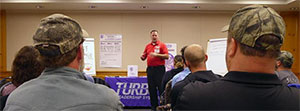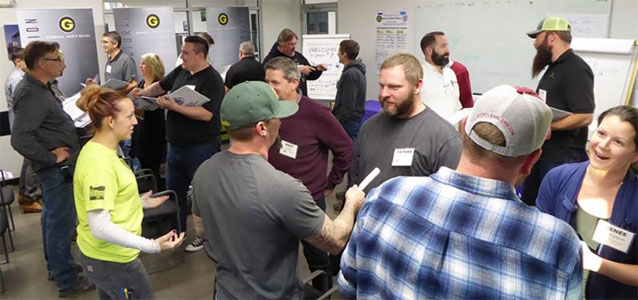
To Meet or Not to Meet
That is the question
One of TURBO LEADERSHIP SYSTEMS long-term clients asked me to sit in as an observer on their quarterly management meeting. I am not used to sitting quietly taking notes as an observer. I created a report that highlighted all the things that went well and pointed out a few areas for improvement. This experience caused me to think more deeply about management team meetings.
The purpose of your Management Meeting is to ensure team alignment, improve understanding. Why? To accelerate the fulfillment of your mission and achievement of your goals.
For meaningful results your meetings are conducted in the context of your mission, vision, and goals. Your meetings also serve as an opportunity to remind, clarify, and confirm your values.
The Agenda:

- Celebrate Successes -Celebrations create energy, pride, and a sense of belonging.
- Company successes, department successes, individual successes (If you have no successes to celebrate - you're in much greater trouble than you can imagine.)
- Reports on prior commitments made, actions taken, progress, and setbacks. Next step action steps when needed are committed to. (Leadership is required so that promises made are kept. Excuses for a lack of follow-up and follow-through must be avoided.)
- Up to date scores are reported on three to six Key Result Areas (KRA's) of your enterprise, department, or team. Recognition is given to those who have made or contributed to progress and wins.

- Acknowledge problems (Problems are reviewed in all areas of the business were scores fall below targets.)
- Remember, the definition of a problem is that which stands between you and your steady progress toward your goals (i.e. continuous improvement in quality, customer service, growth, product improvements, profit, and fun).
- Recognize that a problem well-stated is a problem half-solved! State your problem in "problematical" terms - one statement, not a question. Your well-stated problem will pinpoint the issue with specificity, and won't include the cause or the solution.
- Explore for causes of the problem
- Open yourself to all possible causes of the problem. Don't jump to solutions - just causes now. Look at every option, drop your defensiveness. Give up your ego, your special interests, your biases about people, methods and procedures.
- Explore for solutions - consider all possible solutions
- Be open to all possible solutions to the problem. Don't jump to conclusions - just possible solutions now. Listen, really listen, to every possible solution. The more possibilities you explore, the better choice you will make.
- Agree on best solution
- Look at optional solutions in the light of resources (time, talent, capital, etc.) to determine the best possible solution - the one that will work best now.

- Secure action plans to move forward on the implementation of your agreed to solution
Who will accept responsibility for implementing the solution agreed on?
What 3-steps will they do? What will they do first?
When will they start? - Execute - put the solution into action. You must take action, or all of the forethought, work, and planning goes down the drain, another wasted meeting. This is perhaps the greatest de-motivators of all to what would otherwise be high-performance teams.
- At the end of your meeting review your list of assignments accepted and commitments made.
- Be sure people write down their commitments.
- Be sure you have a written record of who will do what when.
At the start of your next meeting hear reports on commitments made and action taken.
"Putting the SUPER in Superintendent"
This program brings into sharp focus the most important qualities and behaviors of the SUPER Superintendent" who ensures you are the builder of choice and consistently "beat the bid."

Want to Turbocharge your team?
This 50-minute on-site workshop features all of the "-ations" that are characteristic of
Turbo Leadership Systems training:
pertinent inform-ation
engaged particip-ation
results in inspir-ation
personal motiv-ation
Call 503-691-2867 or email us today for available dates: larry@turbols.com

Larry W. Dennis, Sr.
President
Turbo Leadership Systems©
Consider all possible solutions

